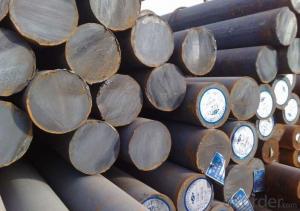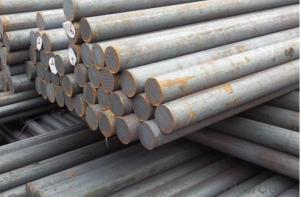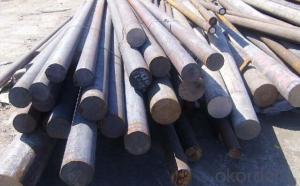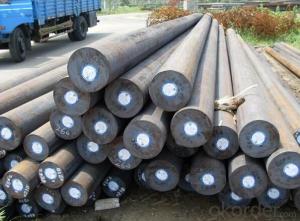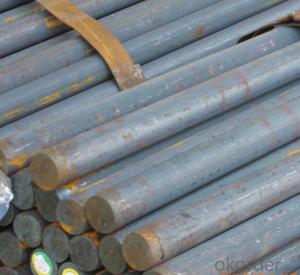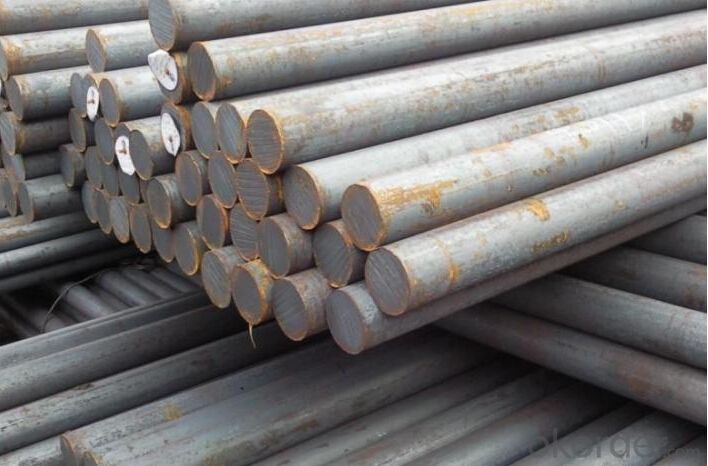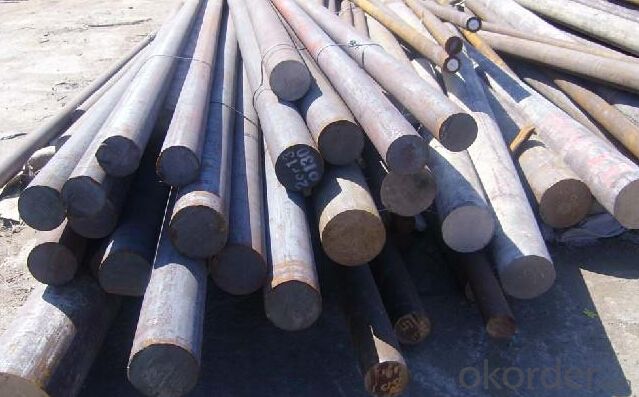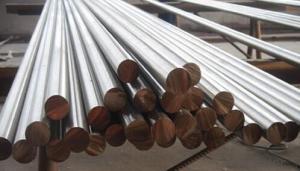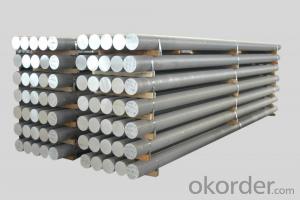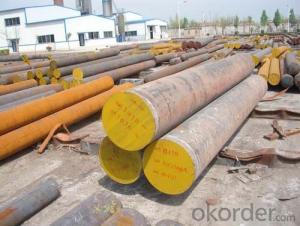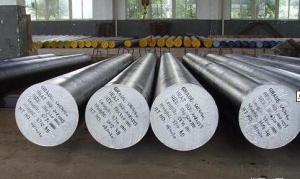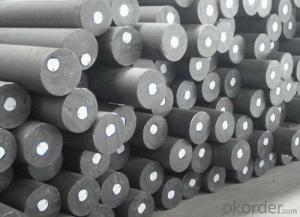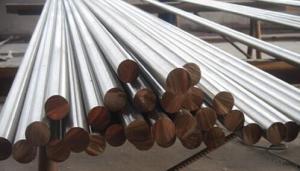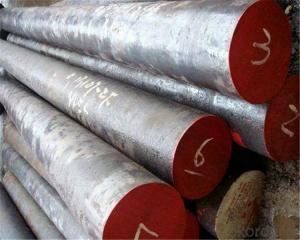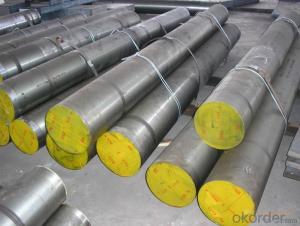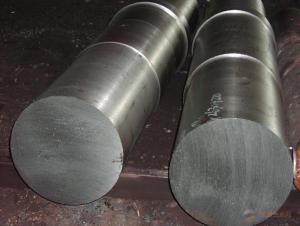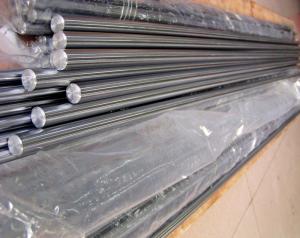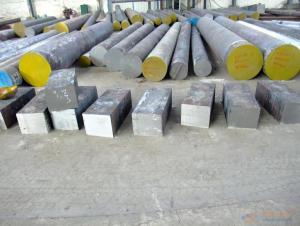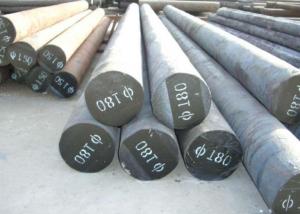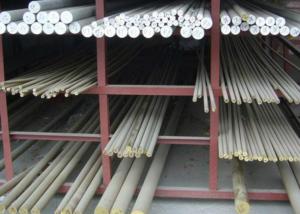DIN1.7225/SAE4140 CNBM Alloy Steel Round Bar with Low Price
- Loading Port:
- Tianjin
- Payment Terms:
- TT OR LC
- Min Order Qty:
- 3 m.t.
- Supply Capability:
- 10000 m.t./month
OKorder Service Pledge
OKorder Financial Service
You Might Also Like
Specification
DIN1.7225/SAE4140 Alloy Steel Round Bar Price
Name | DIN1.7225/SAE4140 Steel Round Bar |
Shape | Round Bar/Square Bar/Flat Bar/Plate/Wire |
Standard | GB/ASTM/SAE/AISI/DIN/JIS/EN/BS |
Surface Treatment: | Black/Peeling/Polished/Machined |
Delivery Condition: | Hot Rolled or Forged/Peeled or Black Surface |
Test | SGS/UT 100% Elements Testing |
Certificate: | ISO/Mill Certificate |
Service: | 24 hours online service / |
more than 20 years trading and manufacture | |
Quality Assurance: | the third party inspection, such as SGS, BV, TUV…etc. is acceptable |
Packaging Details: | seaworthy packaging or as per customer's packing instruction |
Chemical Composition
C | Si | Mn | Cr | Mo | P | S |
0.38-0.43 | 0.40max | 0.60-0.90 | 0.90-1.20 | 0.15-0.30 | ≤0.035 | ≤0.035 |
Application
4140 Alloy Steel is engineering steel supplied in quenched and tempered conditions.
Very good machinability.
High toughness.
High creep strength.
Repeated impact resistant capability.
Packaging & Delivery
Packaging Detail | Sea worthy packing /as per customer's packing instruction |
Delivery Detail | 15 ~ 40 days after receiving the deposit |
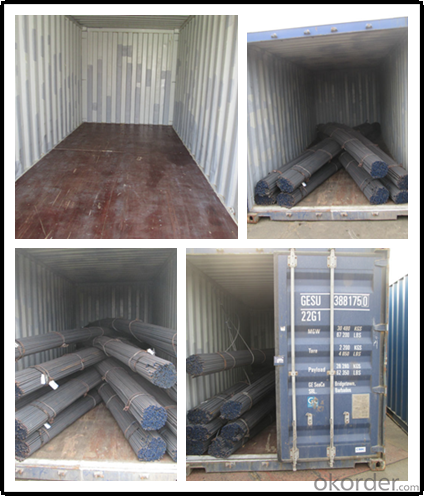
Product Show
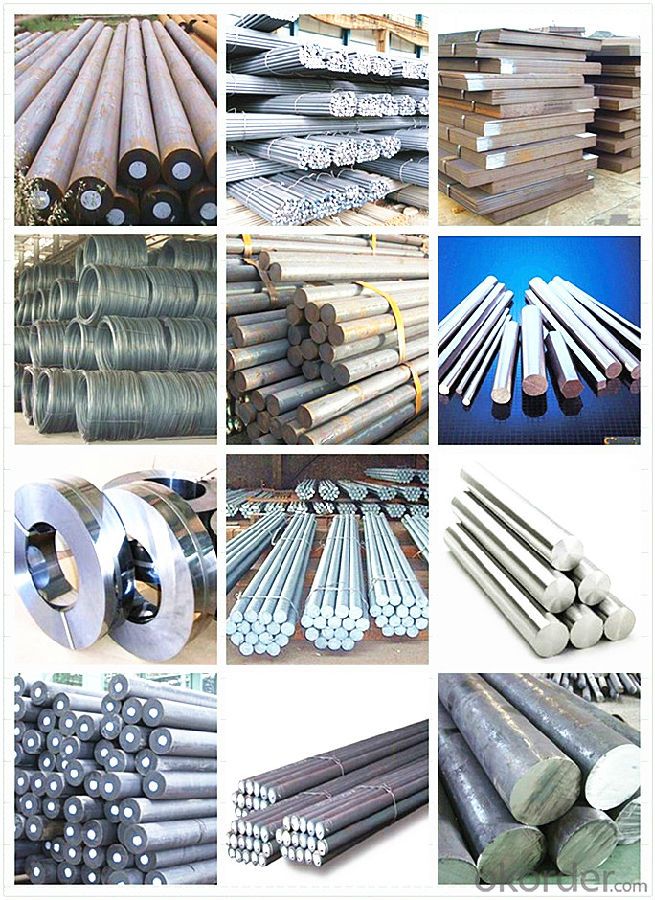
Workshop
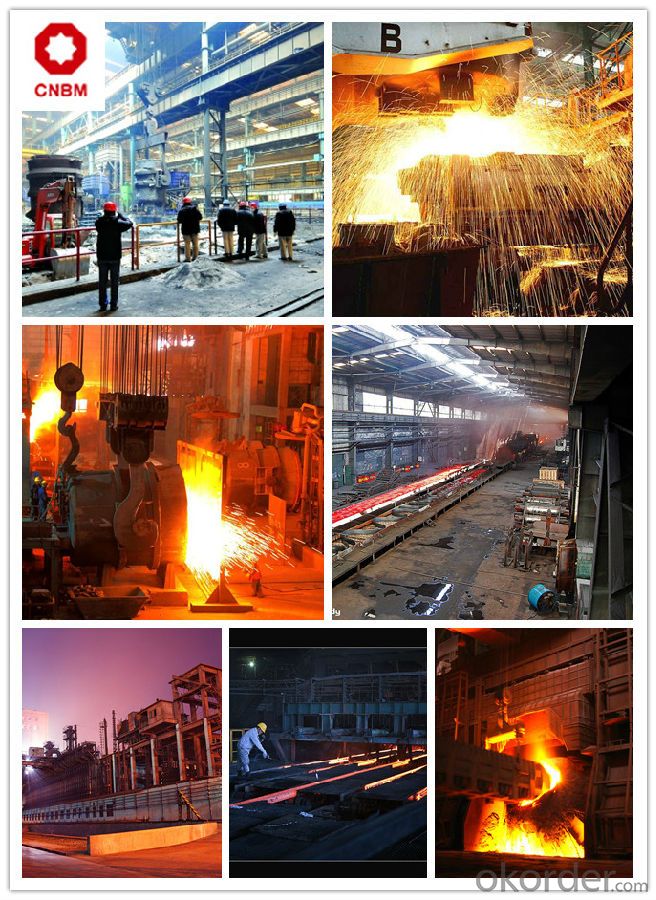
FAQ
Are you a trading company or manufacturer? | Manufacturer |
What’s the MOQ? | 3 metric ton |
What’s your delivery time? | 15-35 days after downpayment received |
Do you Accept OEM service? | Yes |
what’s your delivery terms? | FOB/CFR/CIF |
What's the Payment Terms? | 30% as deposit,70% before shipment by T/T |
Western Union acceptable for small amount. | |
L/C acceptable for large amount. | |
Scrow ,Paybal,Alipay are also ok | |
Why choose us? | Chose happens because of quality, then price, We can give you both. |
Additionally, we can also offer professional products inquiry, products knowledge train (for agents), smooth goods delivery, excellent customer solution proposals. | |
What's your available port of Shipment? | Main Port, China |
What’s your featured services? | Our service formula: good quality+ good price+ good service=customer's trust |
Where are your Market? | Covering more than 160 countries in the world |
- Q: What are the main factors affecting the formability of special steel?
- Several factors influence the formability of special steel, similar to other types of steel. These factors encompass the composition, microstructure, mechanical properties, temperature, and strain rate of the steel. The composition of special steel plays a vital role in determining its formability. The presence of alloying elements, such as chromium, nickel, molybdenum, and vanadium, can significantly impact the steel's ability to be shaped. These elements have the power to modify the steel's strength, ductility, and resistance to deformation. Another crucial factor influencing the formability of special steel is its microstructure. Fine-grained steels generally exhibit superior formability compared to coarse-grained steels. Additionally, the existence of non-metallic inclusions, like sulfides and oxides, can act as stress concentrators and promote crack formation, thereby influencing formability. The mechanical properties of special steel, including yield strength, tensile strength, and elongation, directly affect its formability. Steels with higher yield strength typically pose greater difficulty in shaping as they require more force for deformation. However, steels with high elongation can undergo more significant plastic deformation before failure, making them more formable. Temperature is also a critical factor impacting the formability of special steel. Elevated temperatures enhance the steel's ductility and make it easier to shape. This is due to the reduction in yield strength and increased movement of dislocations within the crystal structure. However, excessively high temperatures can lead to grain growth, negatively impacting formability. The strain rate, which refers to the rate of deformation applied to the steel, also influences formability. Higher strain rates can result in strain hardening, making the steel stronger but less formable. Conversely, lower strain rates allow for greater plastic deformation and improved formability. In conclusion, achieving the desired formability and shaping capabilities of special steel in various applications necessitates an understanding and optimization of its composition, microstructure, mechanical properties, temperature, and strain rate.
- Q: How is special steel used in the mining industry?
- Special steel is used in the mining industry for various applications such as drilling tools, conveyor systems, crushing equipment, and structural components. Its high strength, toughness, and resistance to wear and corrosion make it ideal for withstanding the harsh conditions and heavy loads commonly encountered in mining operations. Additionally, special steel is used for creating cutting edges and teeth on mining machinery, enhancing their efficiency and durability.
- Q: What are the common defects found in special steel production?
- Various defects can be found in the production of special steel, including the following: 1. Inclusions: Impurities or foreign materials can become trapped in the steel during manufacturing, weakening its strength and overall quality. 2. Segregation: Uneven distribution of elements within the steel can occur due to fluctuations in temperature or composition during production. This can lead to inconsistencies in mechanical properties and reduce reliability. 3. Cracks: Improper cooling or excessive stress during manufacturing can cause cracks in the steel, significantly compromising its strength and making it more vulnerable to failure. 4. Decarburization: The surface of the steel can lose carbon when exposed to high temperatures or oxidizing environments, resulting in decreased hardness and strength. 5. Laminations: Improper rolling or forging techniques can cause layered sheets to form within the steel, weakening its structure and potentially causing failure under stress. 6. Dimensional variations: Precise control of dimensions is crucial in special steel production, but inconsistencies in cooling or machining can lead to variations that affect fit, function, and overall performance. 7. Non-uniform microstructure: Inconsistent cooling rates or other processing factors can result in a non-uniform microstructure in the steel, causing variations in hardness, strength, and other mechanical properties that impact overall quality. Manufacturers must implement rigorous quality control measures to detect and minimize these defects during special steel production. Regular inspections, testing, and adherence to industry standards are essential to ensure that the final product meets desired specifications and is free from common defects.
- Q: What are the different methods of surface hardening for special steel?
- Special steel can be surface hardened using various methods. These methods comprise: 1. Carburizing: By subjecting the steel to a carbon-rich environment, such as gas or liquid, carbon atoms can infiltrate the steel surface. This results in enhanced surface hardness and wear resistance. 2. Nitriding: Steel is heated in an environment rich in nitrogen, causing nitrogen atoms to permeate the surface. This creates a durable, wear-resistant outer layer. 3. Induction hardening: By passing an alternating current through a coil, a magnetic field is generated, inducing electrical currents in the steel. The resistance to these currents generates heat, leading to high surface temperatures and rapid quenching, ultimately increasing hardness. 4. Flame hardening: The steel surface is heated using a flame or oxy-fuel torch, followed by quenching in water or oil. The swift cooling from elevated temperatures facilitates surface hardening. 5. Laser hardening: Laser beams are employed to rapidly heat a specific area of the steel surface, which is then promptly cooled with a coolant. This localized heating and cooling process enhances the hardness of the treated region. 6. Plasma nitriding: Steel is placed in a low-pressure plasma chamber, where nitrogen ions bombard the surface, facilitating nitrogen diffusion and the formation of a hardened layer. Each method offers distinct advantages and is suitable for diverse applications and types of special steel. The selection of a surface hardening method depends on factors such as desired hardness, dimensional limitations, and specific application requirements.
- Q: What are the specific requirements for special steel used in the marine shafting industry?
- The specific requirements for special steel used in the marine shafting industry are as follows: 1. Corrosion Resistance: Special steel used in marine shafting must have high resistance to corrosion due to the harsh conditions encountered in marine environments. It should be able to withstand constant exposure to saltwater, humidity, and other corrosive elements without deterioration. 2. Strength and Toughness: Marine shafting steel should possess high strength and toughness to withstand the heavy loads and vibrations experienced in marine operations. It should be able to withstand the continuous stress and dynamic loads without failure or deformation. 3. Fatigue Resistance: The steel used in marine shafting should have excellent fatigue resistance to withstand the cyclical loading experienced during operation. It should be able to endure millions of load cycles without developing cracks or fractures. 4. Dimensional Stability: Special steel used in marine shafting must exhibit dimensional stability to ensure precise alignment and fit within the machinery. It should have minimal dimensional changes under varying temperature and humidity conditions to maintain the integrity of the shaft system. 5. Machinability: It is essential for the steel used in marine shafting to be easily machinable to create complex shapes, such as propeller shafts and couplings. This allows for efficient manufacturing and maintenance of the shafting components. 6. Non-Magnetic Properties: Special steel used in marine shafting must possess low magnetic permeability to avoid interference with sensitive navigation and communication equipment. Non-magnetic properties minimize the risk of compass errors and electromagnetic interference. 7. Certification and Compliance: The steel used in marine shafting should meet specific industry standards and certifications, such as those set by classification societies like the American Bureau of Shipping (ABS) or the International Association of Classification Societies (IACS). These certifications ensure the steel's quality, performance, and adherence to safety regulations. Meeting these specific requirements ensures that the special steel used in marine shafting provides reliable performance, durability, and safety in marine applications.
- Q: How is special steel used in the packaging industry?
- Special steel is used in the packaging industry to create durable, corrosion-resistant, and high-strength packaging materials. It is commonly used for manufacturing metal cans, drums, containers, and closures, ensuring the safe storage and transportation of various products, including food, chemicals, and hazardous materials. The unique properties of special steel make it an ideal choice for packaging applications as it enhances the strength, longevity, and protection of the packaging, ultimately ensuring the quality and integrity of the goods being packaged.
- Q: What are the different methods for improving the corrosion resistance of stainless special steel?
- There are several methods for improving the corrosion resistance of stainless special steel. Some of the common methods include alloying the steel with elements such as chromium, nickel, and molybdenum, which enhance its resistance to corrosion. Another method is passivation, which involves treating the steel with an acid solution to remove any surface contaminants and create a protective oxide layer. Coating the steel with materials like paint, powder coating, or electroplating can also improve its corrosion resistance. Additionally, proper cleaning and maintenance practices, such as regular removal of dirt and debris, can help prevent corrosion and maintain the steel's resistance over time.
- Q: What are the different chemical processing grades of special steel?
- There are several different chemical processing grades of special steel, each with its own unique properties and applications. Some of the most common grades include: 1. Martensitic stainless steel: This grade of special steel is known for its high strength and hardness. It is often used in applications where corrosion resistance and wear resistance are important, such as cutlery, surgical instruments, and industrial equipment. 2. Austenitic stainless steel: This grade of special steel is characterized by its excellent corrosion resistance and good formability. It is commonly used in applications where hygiene and cleanliness are critical, such as in the food and beverage industry, pharmaceuticals, and chemical processing. 3. Duplex stainless steel: This grade of special steel combines the properties of both austenitic and ferritic stainless steels. It offers high strength and excellent corrosion resistance, making it suitable for applications in harsh environments, such as offshore oil and gas platforms, chemical plants, and desalination plants. 4. Precipitation-hardening stainless steel: This grade of special steel can be heat treated to achieve high strength and hardness. It is commonly used in aerospace, defense, and nuclear industries, where strength, toughness, and corrosion resistance are crucial. 5. Tool steel: Tool steel is a special grade of steel that is specifically designed for use in the production of tools, dies, and molds. It is characterized by its high hardness, wear resistance, and toughness. Tool steel is widely used in industries such as automotive, aerospace, and manufacturing. These are just a few examples of the different chemical processing grades of special steel. Each grade has its own specific composition and processing methods to achieve the desired properties for its intended application.
- Q: How does special steel contribute to the strength of structures?
- Special steel contributes to the strength of structures by providing enhanced properties such as high tensile strength, durability, and resistance to corrosion. This type of steel is specifically engineered to withstand heavy loads, extreme conditions, and harsh environments. Its superior strength allows for the construction of structures that can support more weight, withstand greater pressures, and resist deformation. Whether used in buildings, bridges, or machinery, special steel plays a vital role in ensuring the structural integrity and longevity of various constructions.
- Q: How does special steel contribute to the railway industry?
- Special steel plays a crucial role in the railway industry by contributing to the development and maintenance of efficient and reliable rail systems. The unique properties of special steel, such as high strength, durability, and resistance to wear and tear, make it an ideal material for various components and structures within the railway infrastructure. One of the key areas where special steel contributes to the railway industry is in the manufacturing of rails. Special steel rails are designed to withstand heavy loads and intense usage, ensuring the safe and smooth movement of trains. These rails are highly resistant to wear, fatigue, and deformation, resulting in longer service life and reduced maintenance costs. Additionally, special steel is used in the manufacturing of wheelsets, which are critical components of trains. The high strength and durability of special steel make it ideal for wheelset production, ensuring reliable performance and minimizing the risk of derailments. The use of special steel in wheelsets also contributes to increased operational efficiency, as it reduces friction and enhances energy transmission, leading to improved fuel economy and reduced environmental impact. Furthermore, special steel is utilized in the construction of bridges, tunnels, and other infrastructure elements within the railway network. These structures must withstand heavy loads, extreme weather conditions, and various environmental factors. Special steel's exceptional strength, corrosion resistance, and longevity make it a preferred choice for such applications, ensuring the safety and reliability of rail systems. In summary, special steel significantly contributes to the railway industry by providing the necessary strength, durability, and resistance to wear and tear for various components and structures. Its use in rails, wheelsets, and infrastructure elements enhances the efficiency, reliability, and safety of rail systems, ultimately benefiting passengers, freight transport, and the overall transportation sector.
Send your message to us
DIN1.7225/SAE4140 CNBM Alloy Steel Round Bar with Low Price
- Loading Port:
- Tianjin
- Payment Terms:
- TT OR LC
- Min Order Qty:
- 3 m.t.
- Supply Capability:
- 10000 m.t./month
OKorder Service Pledge
OKorder Financial Service
Similar products
Hot products
Hot Searches
Related keywords

